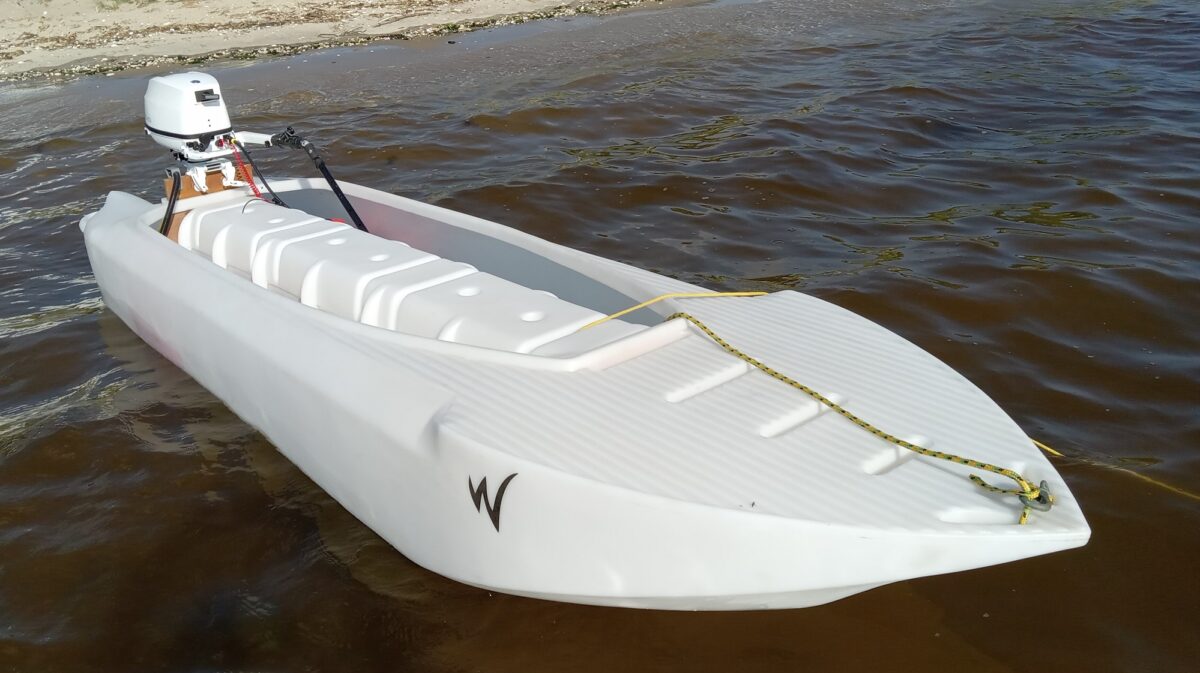It seems like anglers have learned to put in the right perspective the unsubstantiated promises of ‘hands free kayak fishing’ , ‘stand up kayak fishing’, ‘ergonomic seat’, and other hype that’s typical to this market. After all, you can’t fool all the people all the time…
Since the US economy isn’t exactly booming in recent years, sales of motorboats keep showing weakness, which in its turn sustains the market for cheaper alternatives, I.E. canoes and kayaks. In this market too, the main drive seems to be price, and increasingly so.
In the past year (2012), the main trend that could be observed in high-end fishing kayaks is the quest for more speed, a broader range of travel, and increased safety. In other words – motorized kayaks. And since common fishing kayaks are barely suited for weak electric trolling motors, realistically speaking, the W kayak is the only option out there when outboard gas motors are concerned. This explains the success of the motorized W kayak this year, both in cold and warm regions, inshore and offshore –
In other words, this new concept introduced at the end of 2011 has already proven itself as the real deal for any angler looking for a personal fishing boat that offers all advantages that can be found both in bigger motorboats and in common kayaks, plus some more features and advantages that only a W offers, such as all-water mobility, no need for a special kayak rack, zero back pain, stand up paddling, fishing, and driving , and more…
So what has happened to the electric trolling motor? Nothing, really – It’s a concept that got introduced and energetically pushed into the kayak fishing market by big companies who make electric motors and fishing kayaks. It got people excited, and many of them outfitted their kayak with such a motor. As time passed, the problems associated with this setup became more apparent, and much of the initial enthusiasm has faded.
Electric trolling motors are here to stay in the kayak fishing market, but typically as accessories for kayaks used in small bodies of flat water, and for shorter trips. Relying on these systems for fast moving water, offshore, or longer trips isn’t practical, and that’s where the outboard gas motor shines.
As far as kayak design goes, no big new this year, as usual.
The ‘Hybrid’ kayak that was energetically pushed by one of the major companies in the market hasn’t replaced the sit-on-top (SOT) or the sit-in kayak. The hybrid kayak, which is essentially a shallow canoe, works on flat water but when the wind picks up and the water gets choppy, it’s time for its passengers to head back home, unless they’re in a mood for getting sprayed and bailing out water from the hull.
BTW, that company itself didn’t do too well, and had to change owners.
As before, kayak manufacturers keep relying mainly on their versions of the traditional SOT kayak, and occasionally, a new manufacturer tries to introduce their own version (or perversion) of this concept that has been around for over 40 years, and hasn’t evolved during this period in any significant way.
